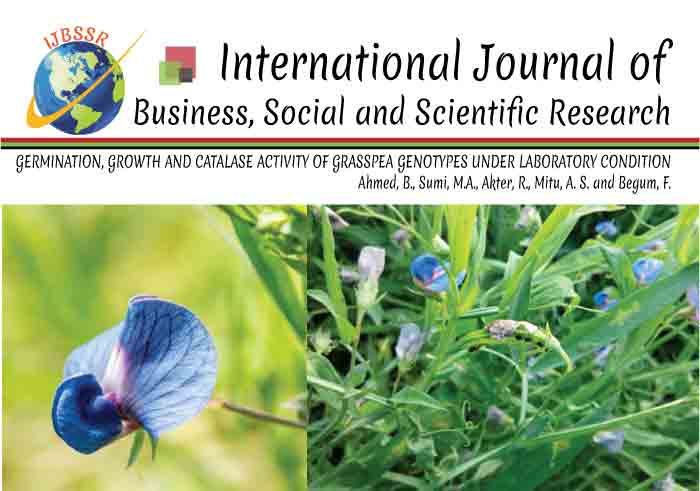GERMINATION, GROWTH AND CATALASE ACTIVITY OF GRASSPEA GENOTYPES UNDER LABORATORY CONDITION

Five grasspea genotypes (BD-3367, BD-3372, BD-3398, BD-4750, and
BD-4779) were tested against varying levels of salinity 0, 5dS/m, 10dS/m and 15
dS/m in HYPONeX solution under laboratory condition during 2016-2017, to study
the salt tolerance of the genotypes at germination and seedling stages along
with coping performance on enzymatic activity performance to muddle through the
stress. As control tretment, distilled water (0 dS/m) was used. Germination
percentage (GP), root length (RL), shoot length (SL) and enzymatic activity
(catalase) performance were significantly found to be affected by salinity. The
genotypes BD-3398 showed better performance at 5 dS/m, and 10 dS/m and survived
up to 15 days after germination. At 15 dS/m salinity level no genotypes can
survive. In case of Catalase (CAT) activity, it was found that due to increased
salinity, the catalase activity increased. Grasspea genotype BD-3398 showed the
better result than all other grasspea genotypes in Catalase (CAT) activity.

